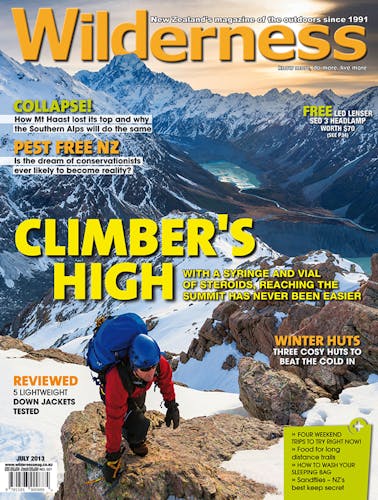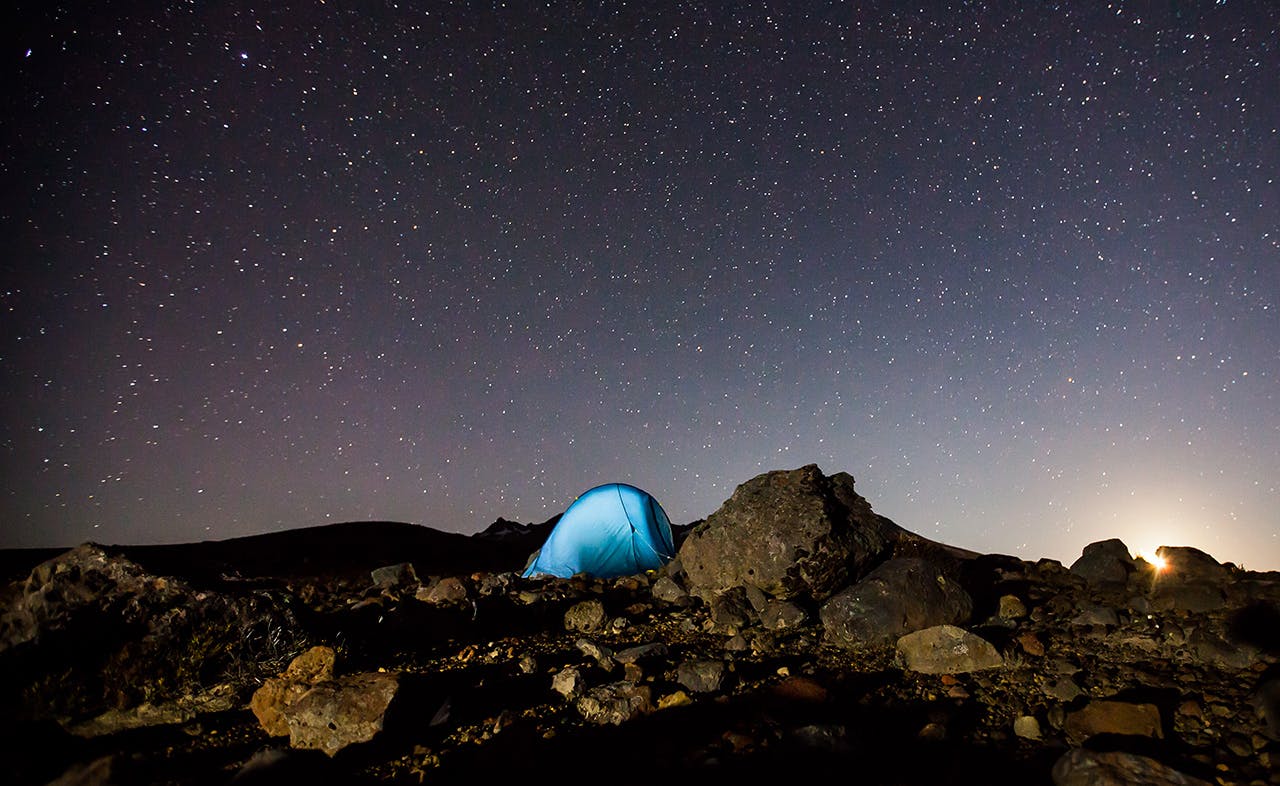Sleepless on Tongariro
A stunning landscape time-lapse video shot by Taupo tramper and photographer Bevan Percival has attracted international attention and made the hundreds of hours of work involved in its filming all the more worthwhile.
Percival, a 39-year-old roading asset manager and father of two, did 15 overnight trips and about the same number of day trips around the Central Plateau to shoot the video.
He spent sleepless nights around Tongariro National Park and on top of Mt Tongariro itself.
New Zealand Landscape Time-lapse Volume Two was selected as a staff pick on Vimeo and since then has gained more than 304,000 views and nearly 600 comments.
Volume One also became popular and was screened at the New Zealand pavilion at the Frankfurt Book Fair in Germany.
It took Percival six months and hundreds of hours shooting, rendering and editing to make the six minute Volume Two video.
“With the night time shots I wanted to shoot on dark or full moon nights so the challenge is to get those when they coincide with fine weather,” said Percival, a self-described night owl. “There are only a certain number of times each month when the phase of the moon is right for what you’re trying to achieve.
“If that doesn’t coincide with good weather then you have to wait until next month.
“Some of my trips were failures – that’s just the New Zealand weather for you; it can be a beautiful clear night and then out of nowhere it clouds in.”
Before going into the field, making the video involved a significant amount of time planning and location scouting.
Percival used online information about the night sky and smart phone app Stellarium to time his trips with the phase of the moon and the position of the Milky Way.
Once time and location was decided, Percival would tramp in with a 20kg pack, a 1.8m-long motorised tracking rail for the camera and the two tripods the rail is connected to.
After setting up the gear, he’d crash in his bivy sack beside it and check on the camera about 20 times during the night to make sure the batteries hadn’t run out or that dew or rain wasn’t damaging it.
“When you stay up half the night it takes a toll on you after a while,” Percival said.
The celestial performances he witnessed, however, made the hardship worthwhile.
One night he was camped on Mt Tongariro and the ground around him lit up as he was changing the camera’s position.
“It looked like the full moon had just come out,” he said. “I turned around and there was this spectacular meteor burning up in the sky behind me.
“You never see that sort of stuff unless you’re out somewhere like that.”
Percival is now working on Volume Three and also wants to make a time-lapse video in the South Island.
“I really hope to get down there because there’s such majestic scenery,” he said.
Potton’s conservation work recognised
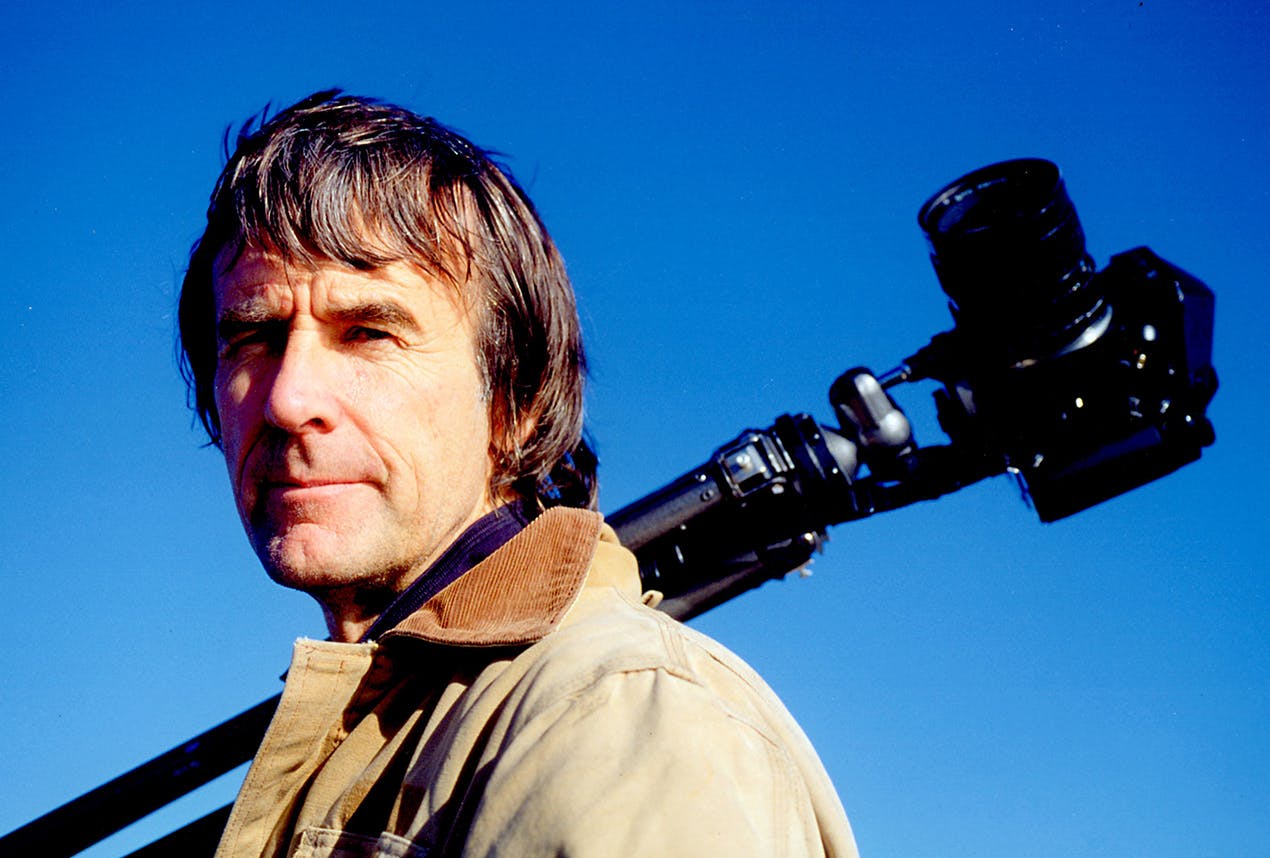
Craig Potton has received a New Zealand order of Merit for services to conservation and photography. Photo: Supplied
The Queen’s Birthday Honours List this year included distinguished names such as conservationist, photographer and book publisher Craig Potton, and former director general of the Department of Conservation John Ombler.
Potton has been appointed to the New Zealand Order of Merit for his services to conservation and photography, while Ombler received the Queen’s Service Order award for services to the State.
Ombler’s award recognises nearly four decades of work in the New Zealand public service. His career started in 1975, in Department of Lands and Survey, before moving onto DOC in 1987. More recently, he was acting chief executive of the Canterbury Earthquake Recovery Authority (CERA), a role he left in late 2011.
For Potton, receiving an Order of Merit award is a nice way of seeing the work of a lifetime acknowledged. “It’s a bloody nice balance to have the two acknowledged,” he told Wilderness from his Nelson home, adding that it is “kind of neat” that his work as a photographer was recognised just as he prepares to open a gallery in Nelson this September.
Potton, who has been openly critical of the current government’s policies, says receiving the award is proof that “we live in a pretty tolerant culture in New Zealand”.
“We acknowledge fighters for causes, even if we don’t believe in the causes,” he said.
His fight for the country’s wilderness is far from over. “New Zealanders need to care more about the high country and the tussock lands that are being lost,” he said. “Perhaps the most immediate issue is saving the Denniston Plateau, a magnificent plateau with sandstone pavements on the West Coast. We already knocked over half of it. Society should not do that.”
– Vera Alves
Otago club turns 90
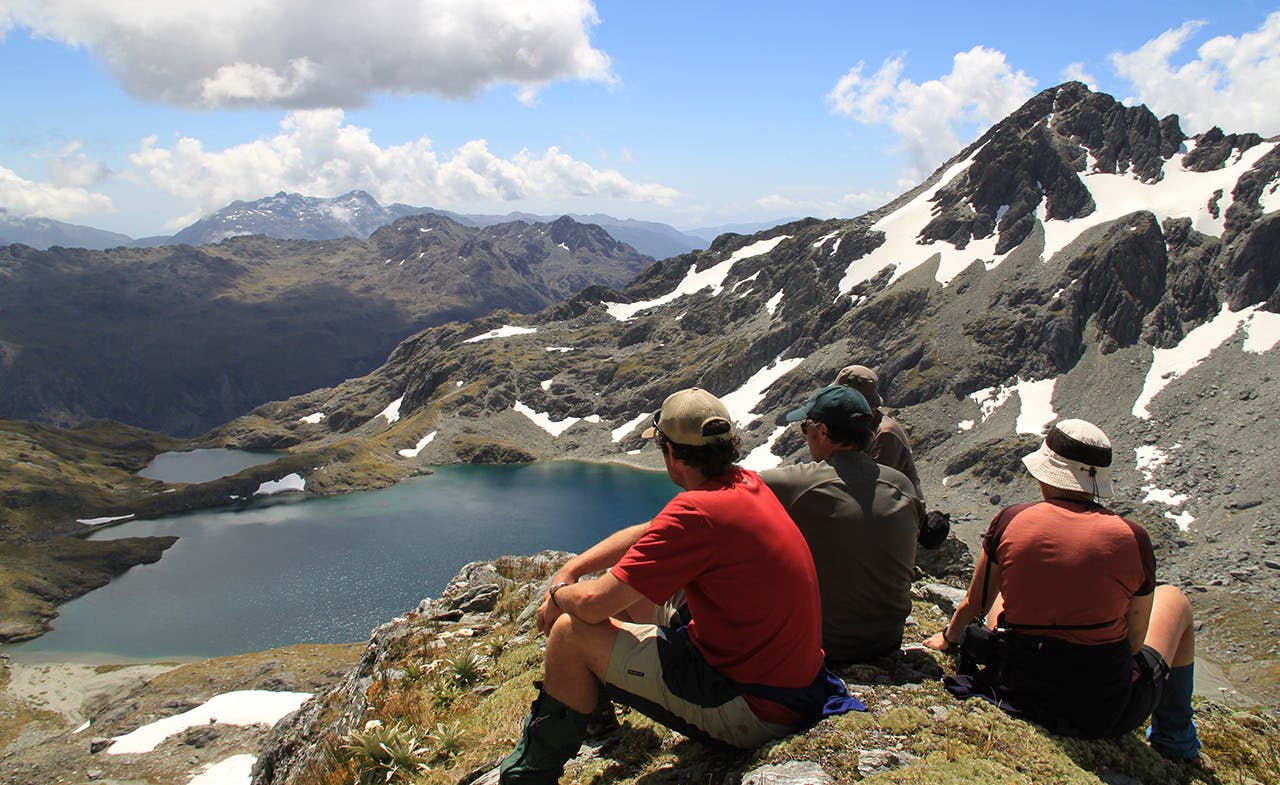
The OTMC has been going on climbing and tramping trips for 90 years. Photo: Supplied
For Antony Pettinger, there’s nothing like a hardcore multi-day tramp to cement relationships.
He’s not only made lifelong friends that way, but that’s also how he met his wife, Debbie.
“It’s a great way to meet your partner because you sometimes see them at their worst so you certainly know what you’re getting,” he says, laughing. “There would be dozens of couples in the club who met that way.”
Pettinger, 44, is president of the Otago Tramping and Mountaineering Club (OTMC) and tries to regularly lead members off-track into the wilderness. Recently he led a group of newbies into Siberia Valley and, he says, they loved it.
“From my point of view as the president, I’m still pushing no huts, no tracks adventures,” he says. “That, for me, is what tramping clubs should ultimately be encouraging.”
The club has a proud history of such exploration. Author, mountaineer and club member Bob McKerrow called the club a “climber’s nursery”. McKerrow points out the late Bill Denz, one of New Zealand’s greatest climbers, came out of the club, along with Murray Jones, Calum Hudson and Phil Heron.
“The 60s and 70s were the big years when we did a lot of trips into remote areas,” Pettinger says. “Since the mid 80s, the club membership age increased and we’ve had to adapt to that.
“A lot of our members aren’t into camping out and prefer sticking to tracks and huts.
“I joined the club in the mid 1980s when I was 15 and at that time a lot of us were under 20,” Pettinger says. “Now we hardly have any members under 35.
“When I joined I had no transport so the club was a good way to go tramping.”
OTMC is calling out to current and former members, many now scattered across the country and the world, to attend the club’s 90th anniversary dinner this August in Dunedin.
Club membership secretary Richard Forbes has been trying to contact the roughly 1300 past members, but says the club’s records aren’t always up-to-date. He’s placed advertisements in local newspapers and created an email address so people can get in touch, but so far only 20 people have made contact this way.
Pettinger says the club is making a big deal of the 90th anniversary as a gesture of appreciation for its older life members and their contribution to the club.
OTMC was formed on August 23, 1923, becoming the first in the South Island and the third club to open in the country.
In 1965, club members became the first people to freedom walk the Milford Track. At the time, people could walk the track only if they paid to be guided by the Tourist Hotel Corporation.
The club objected to paying and organised a freedom march over Easter which convinced the Government of the day to end the restriction so anyone could walk it.
That led to Clinton Forks, Mintaro and Dumpling Huts being built on the track for freedom walkers.
Club members also built two huts in the Silver Peaks: Green Hut, which was removed in 1988, and Jubilee Hut, which DOC replaced five years ago. This year, members finished rebuilding the 10-bunk Leaning Lodge Hut in the Rock and Pillar Range.
While the club’s demographics have changed, Pettinger says it remains active. Every week, for example, between 30 and 40 members attend meetings in its clubrooms. The club also runs a bush craft course every year which usually garners 10 to 15 new members each time. Forty-six people did the course this year.
– Josh Gale
Kime Hut ready soon
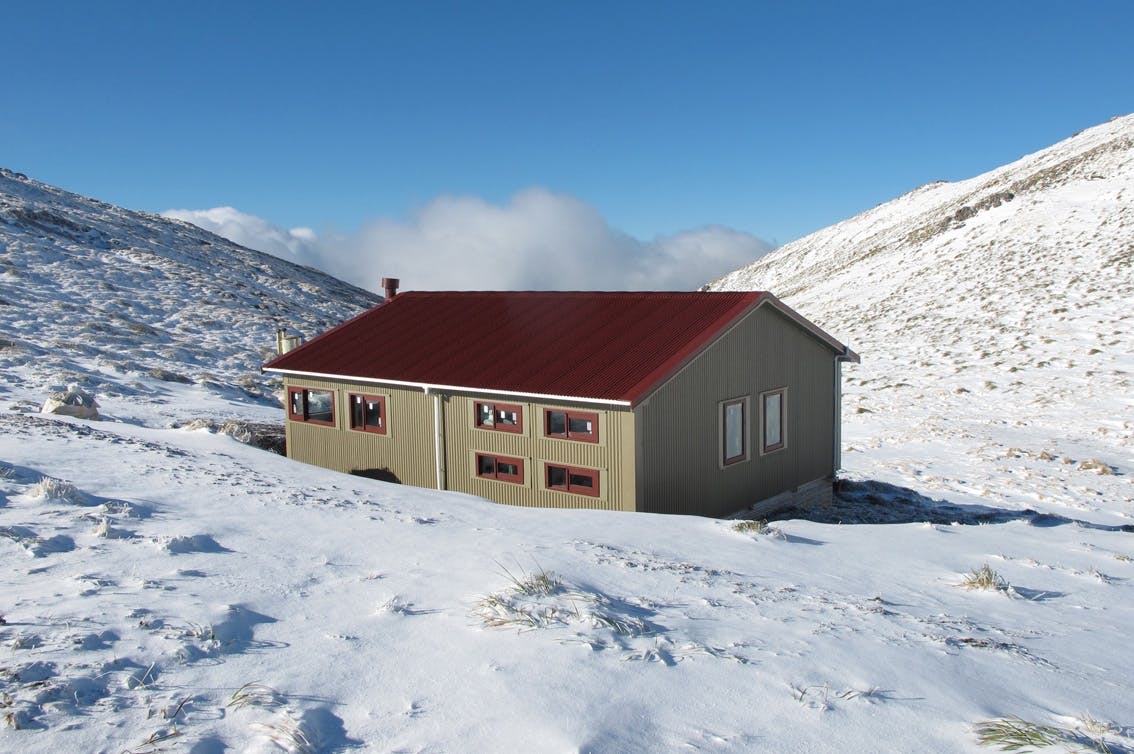
Almost there – the new Kime Hut should be ready soon. Photo: Supplied
A long time Tararua Forest Park tramper has voiced his concern about the way DOC removed and replaced Kime Hut.
Retired Levin resident and tramper Ernie Algie has bagged all but four huts in Tararua Forest Park and became concerned recently when a tramping buddy told him the new Kime Hut is complete, but still closed to the public.
DOC removed the old Kime Hut before its replacement was complete which Algie believes was dangerous because of the hut’s exposed location on the main ridge about one kilometre north of 1529m Mt Hector.
“I think DOC made a big mistake scuttling the old hut before the new one opened,” he said. “In the interests of safety, it’s not the correct thing to do.
“People have lost their lives in that area. It’s a notorious place for snow and cloud, and people are known to walk around in circles up there. It really clags in.”
Kime can be accessed either by Fields Track to the north or Dress Circle Track from the south. Between 2010 and 2011, 821 people stayed at the hut, up from 776 the previous year.
Algie points out Kime is only 5km from Field Hut which is close to the road-end and popular with family groups and he is concerned inexperienced parties staying at Field might attempt to visit Kime only to discover there’s no shelter available.
Algie contacted DOC Wellington three times to ask why the new hut is still closed and received two different explanations.
DOC’s Rob Stone clarified the issue: “The construction contract is close to completion and with any building contract there are details that need to be carefully inspected,” Stone said. “Because of the extreme weather nature of the location we are ensuring weather tightness around doors and windows is satisfactory and durable.
“We did an inspection two weeks ago and questioned some of the flashing details.
“It’s not an easy matter getting this right given the complex nature of them and the extreme environment.
“The contractor is attending to these details and I am confident they will be done well and soon.
“The hut cannot legally be used until that is done and there are signs advising of that at the relevant road ends and neighbouring huts.
“The hut does not have locks on it and cannot be physically locked.”
Stone said to reduce flight time and cost, the old Kime Hut was dismantled and removed progressively as the helicopter was flying materials in for the new hut.
– Josh Gale
Old Kime Hut finds new home by the river
The old Kime Hut has found a new home beside Otaki River and not far from its old location.
Harley Davidson rider and Otaki resident Kimble Coulson purchased the old hut from the helicopter pilot who removed it and flew in materials for its replacement.
Coulson, 48, is rebuilding the old hut on his 10ha property beside the Otaki River.
“I read in one of the local rags that DOC was getting rid of the old one and I wondered what they were doing with it,” Coulson said. “I contacted DOC who put me in touch with the contractor and we worked out a deal.”
Coulson, who manages a local motorcycle shop, and his family will use the hut as a storage shed for gardening materials and as a getaway cabin they’ll stay in a few times a year.
The hut’s new location is remote and requires a crossing of Otaki River to access.
Coulson will paint the hut, eventually install a potbelly stove, remove the bunks and replace the flooring and foundations.”
“It’s past its used by date at its old altitude, but it’s not a wreck,” he said. “It’s perfectly useable, just not at 1400m.
“I might like to put a deck with a rocking chair on it overlooking the river.”
Tararua Tramping Club maintained the old Kime Hut and club president Paul Maxim said he is pleased Coulson purchased it.
“It was going to be destroyed and as far as the club was concerned if it could be put to good use we were happy with that,” he said.
DOC area manager Rob Stone said the old hut became the property of the contractor as the contract required him to remove it from the site.
“As the hut was preconstructed off site originally, it was able to be taken apart reasonably easily,” Stone said. “The contractor discussed his idea of selling the hut, with the intention that it could have a new life somewhere else rather than being taken to the dump
“It was sold for a small sum to offset helicopter costs.”
Coulson said the hut’s new location is visible from Otaki Gorge Road.





